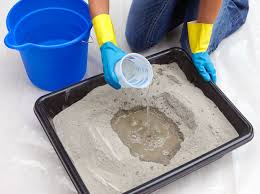How is concrete made?
- Mike Teng
- Apr 28, 2018
- 1 min read
Concrete is a made up of cement, aggregates, admixtures and water in designed proportions. If it is a small job, the mixing can be done by hand or through the use of a portable concrete mixer.
The bulk of concrete produced is however for projects and come from batching plants.
Batching plants contain storage facilities and equipment designed for the purpose of blending the raw materials in designed proportions. That mixture, which becomes concrete, is then loaded into mixer trucks.

The majority of concrete production facilities are located nearby areas where concrete is used; taking into account its setting time, concrete prepared at the batch plant, must be delivered to its destination within an hour and a half.
A concrete factory must be located within a radius of 20 to 30 km from the work site, depending on traffic conditions.
A very precise manufacturing process
A ready-mix concrete plant consists of silos that contain cement, sand, gravel and storage tanks of admixtures such as plasticizers, as well as mixers to blend the components of concrete. These components are gravity fed into the preparation bin. The quality of concrete can be maintained only if the formulation is carefully administered. The water dosage in particular must be very precise and the mixing itself must remain continuous and consistent. To accommodate all of these constraints, most concrete plants are automated to ensure reliability throughout the manufacturing process.
Finally, the concrete prepared in a batch plant is loaded into a mixer truck, also known as a transit mixer, which delivers it to the construction site.




























The key to achieving a strong, durable concrete rests in the careful proportioning and mixing of the ingredients. A mixture that does not have enough paste to fill all the voids between the aggregates will be difficult to place and will produce rough surfaces and porous concrete. A mixture with an excess of cement paste will be easy to place and will produce a smooth surface; however, the resulting concrete is not cost-effective and can more easily crack.